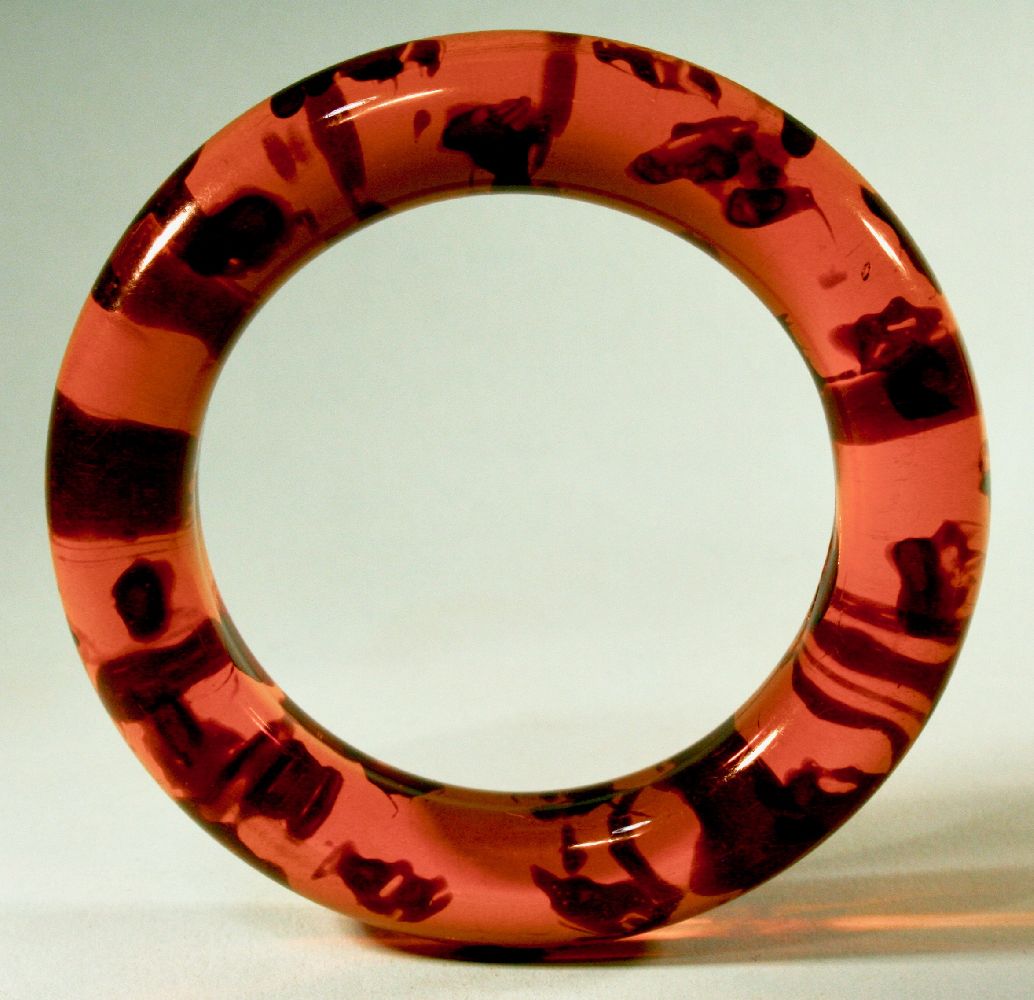

Title: Antique Amber Art Deco Decorative Bakelite Bracelet
Shipping: $29.00
Artist: N/A
Period: 20th Century
History: Art Deco
Origin: North America > United States
Condition: N/A
Item Date: N/A
Item ID: 52
A beautiful amber Art Deco bracelet. Large and heavy, 30s-40s Art Deco Genuine Bakelite Bangle Bracelet Translucent Honey Amber, Tested Authentic, Collectible Bakelite Bracelet. 40s Vintage Chunky Root Beer Swirl Transparent Rounded Domed Bangle Bracelet. It has no seams and no mold lines. Excellent Condition - no chips, cracks or repairs, only small, age related scratches. Bakelite items, particularly jewelry and radios, have become a popular collectible. The term Bakelite is sometimes used in the resale market to indicate various types of early plastics, including Catalin and Faturan, which may be brightly colored, as well as items made of Bakelite material.
Baekeland was already wealthy due to his invention of Velox photographic paper when he began to investigate the reactions of phenol and formaldehyde in his home laboratory. Chemists had begun to recognize that many natural resins and fibers were polymers. Baekeland's initial intent was to find a replacement for shellac, a material in limited supply because it was made naturally from the excretion of lac insects (specifically Kerria lacca). Baekeland produced a soluble phenol-formaldehyde shellac called "Novolak", but it was not a market success. Baekeland then began experimenting on strengthening wood by impregnating it with a synthetic resin, rather than coating it. By controlling the pressure and temperature applied to phenol and formaldehyde, Baekeland produced a hard moldable material that he named "Bakelite", after himself. It was the first synthetic thermosetting plastic produced, and Baekeland speculated on "the thousand and one ... articles" it could be used to make. Baekeland considered the possibilities of using a wide variety of filling materials, including cotton, powdered bronze, and slate dust, but was most successful with wood and asbestos fibers.
Link: https://en.wikipedia.org/wiki/Bakelite
Bakelite / sometimes spelled Baekelite) was the first plastic made from synthetic components. Developed by the Belgian–American chemist Leo Baekeland in Yonkers, New York, in 1907. Bakelite was patented on December 7, 1909. The creation of a synthetic plastic was revolutionary for its electrical nonconductivity and heat–resistant properties in electrical insulators, radio and telephone casings and such diverse products as kitchenware, jewelry, pipe stems, children's toys, and firearms. The "retro" appeal of old Bakelite products has made them collectible